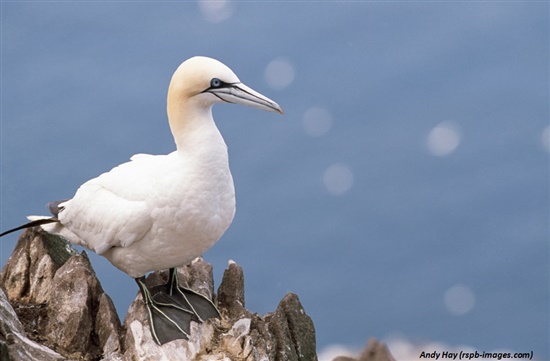Five facts you need to know about gannets
Gannets are Scotland’s, and indeed Britain’s, largest seabird. The specific type found here is the northern gannet, identifiable by its bright white plumage, long neck and beak, and distinctive black wing tips.

Northern gannets come to Scotland to nest and breed among huge seabird cities known as ‘colonies’ around the coast. They migrate south for the winter, between…